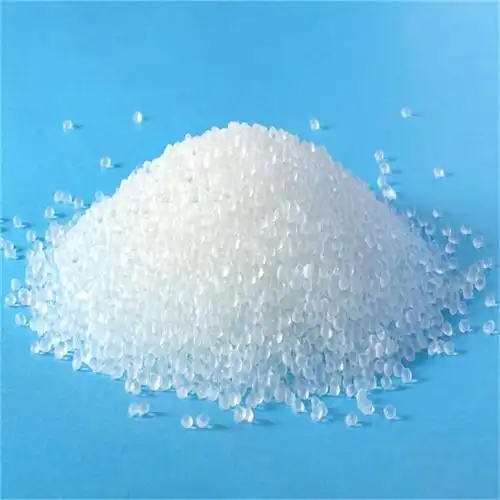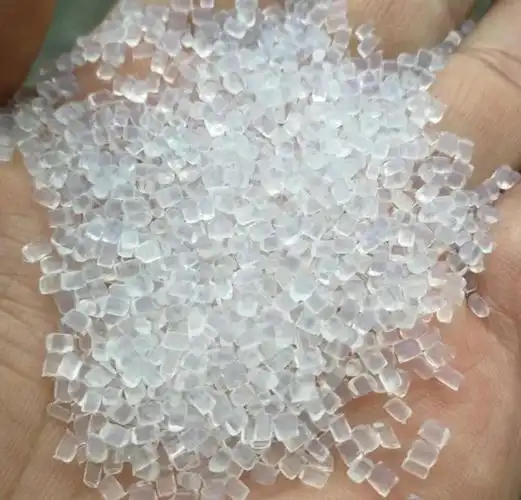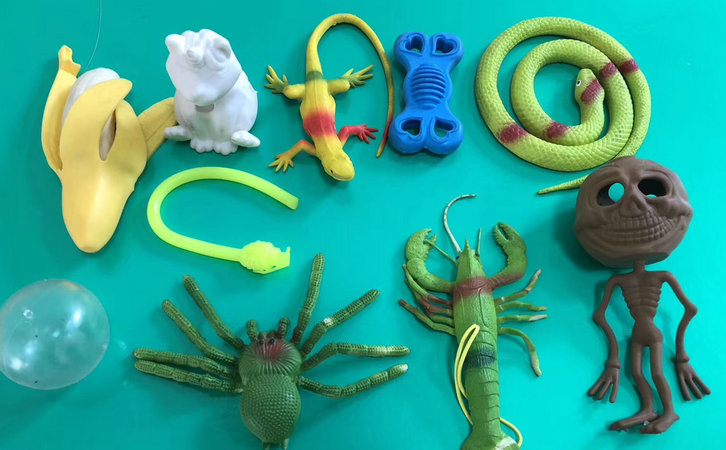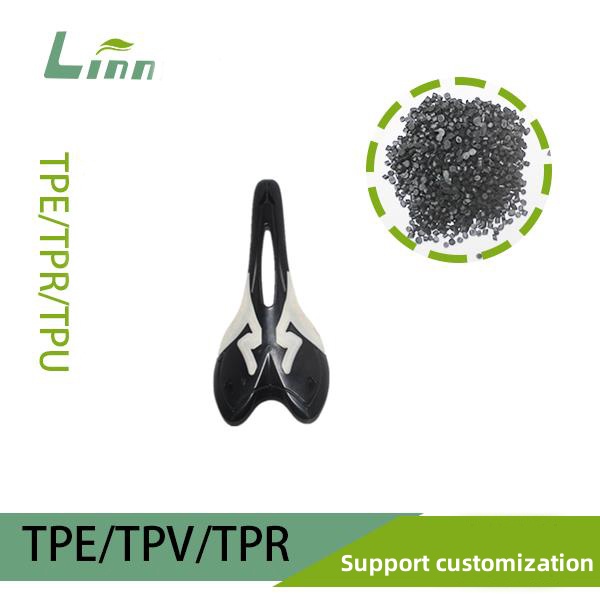As someone who’s spent years navigating the complexities of the plastics industry, I’ve seen countless questions about material compatibility come up time and again. One topic that’s been buzzing lately is whether thermoplastic vulcanizates (TPV) can be blended with thermoplastic elastomers (TPE) for granulation. It’s a practical concern for manufacturers looking to optimize production, reduce costs, or create custom compounds with specific properties. Drawing from my experience and technical know-how, I’ll dive deep into this question, exploring the feasibility, challenges, and best practices for blending these materials. Let’s break it down step by step.

Understanding TPV and TPE: The Basics
Before we get into blending, it’s worth clarifying what TPV and TPE are, as their similarities and differences set the stage for whether they can work together.
TPV: A subset of thermoplastic elastomers, TPV is a dynamically vulcanized blend, typically consisting of a thermoplastic matrix (like polypropylene) with cross-linked rubber particles (often EPDM). This gives TPV excellent elasticity, heat resistance, and durability, making it a go-to for automotive seals, gaskets, and industrial applications.
TPE: A broader category of materials, TPEs are flexible, rubber-like plastics that can be processed like thermoplastics. They include various subtypes like styrenic block copolymers (SBCs), thermoplastic polyurethanes (TPUs), and copolyesters. TPEs are prized for their versatility, used in everything from soft-touch grips to medical devices.
While both materials share some traits—like flexibility and thermoplastic processing—they differ in their chemical makeup and performance. TPV’s vulcanized rubber phase gives it superior resilience and temperature resistance compared to most TPEs, which can vary widely in composition.
Is Blending TPV and TPE Feasible?
The short answer is: yes, TPV and TPE can be blended for granulation, but it’s not a straightforward process. Compatibility, processing conditions, and end-use requirements all play a role in determining success. Let’s explore the key factors.
1. Material Compatibility
Blending two polymers isn’t like mixing sugar and water—it’s a complex dance of molecular interactions. TPV and TPE compatibility depends on their base chemistries:
Similar base polymers: If the TPV’s thermoplastic matrix (e.g., polypropylene) aligns with the TPE’s matrix (e.g., a PP-based SEBS), blending is more likely to succeed. For example, a PP-based TPV and a PP-based TPE can form a relatively homogeneous blend due to their shared backbone.
Dissimilar polymers: Mixing a PP-based TPV with a TPU or polyester-based TPE can lead to phase separation, where the materials don’t fully integrate. This results in poor mechanical properties, like reduced tensile strength or delamination.
In my years working with compounders, I’ve seen blends work best when the TPE and TPV share a common thermoplastic phase. Without this, you’re fighting an uphill battle.

2. Processing Considerations
Granulation involves melting, mixing, and extruding the materials into pellets. Processing TPV and TPE together requires careful control of:
Temperature: TPVs typically process at 180–220°C, while TPEs vary widely (e.g., SEBS at 160–200°C, TPU at 190–230°C). Mismatched melting points can cause degradation or incomplete mixing.
Shear and mixing: TPV’s vulcanized rubber phase needs high shear to disperse evenly, but excessive shear can degrade some TPEs, like SBCs.
Additives: Compatibilizers (e.g., maleic anhydride-grafted polymers) can improve blending by bridging dissimilar phases. Stabilizers and lubricants may also be needed to prevent degradation.
I’ve spent countless hours tweaking extruder settings to get blends just right. A twin-screw extruder with precise temperature zones and high mixing capability is often the best tool for this job.
3. End-Use Performance
The ultimate goal of blending is to create a material that meets specific performance needs. Blending TPV and TPE can tailor properties like:
Hardness: Combining a soft TPE with a harder TPV can fine-tune the durometer.
Elasticity: TPV’s high recovery can enhance a TPE’s elastic properties.
Cost: TPEs are often cheaper, so blending can reduce costs while retaining some of TPV’s benefits.
However, blending can also compromise performance. For instance, adding a less heat-resistant TPE to TPV might lower the compound’s temperature tolerance, limiting its use in high-heat applications like automotive under-hood parts.

Practical Challenges and Solutions
Blending TPV and TPE isn’t without hurdles. Here’s a rundown of common issues and how to tackle them, based on my hands-on experience.
| Challenge | Description | Solution | Notes |
|---|---|---|---|
| Phase Separation | Incompatible polymers lead to poor blending and weak mechanical properties. | Use compatibilizers or select similar base polymers (e.g., PP-based TPV and TPE). | Test small batches to confirm compatibility. |
| Degradation | High temperatures or shear can degrade one or both materials. | Optimize extruder settings; use stabilizers. | Monitor melt flow index to detect degradation. |
| Inconsistent Properties | Uneven mixing results in variable performance across pellets. | Use a twin-screw extruder with high mixing zones. | Conduct quality checks on pellets. |
| Cost vs. Performance | Blending may not achieve desired properties cost-effectively. | Balance TPE/TPV ratios; test for target specs. | Consider if a single material is more economical. |
One memorable project involved blending a PP-based TPV with an SEBS-based TPE for a soft-touch automotive interior part. We hit phase separation issues early on, but adding a small percentage of a grafted compatibilizer turned things around. The final compound hit the sweet spot for softness, durability, and cost.
Best Practices for Blending TPV and TPE
To make blending work, here are some tips I’ve learned the hard way:
Start with Compatibility Testing: Before committing to large-scale production, run small-scale trials to assess blend homogeneity and properties. Differential scanning calorimetry (DSC) or scanning electron microscopy (SEM) can reveal phase interactions.
Optimize Processing Parameters: Use a twin-screw extruder with customizable screw profiles. Keep temperatures within the safe range for both materials and monitor torque to avoid over-shearing.
Use Additives Strategically: Compatibilizers, antioxidants, and UV stabilizers can enhance blend performance. Don’t overdo it—additives can affect cost and processing.
Test End-Use Performance: Conduct mechanical tests (tensile strength, elongation, hardness) and environmental tests (heat aging, UV exposure) to ensure the blend meets specs.
Document Everything: Record processing conditions, ratios, and test results. This saves time when scaling up or troubleshooting.

Real-World Applications
Blending TPV and TPE has practical applications across industries. Here are a few examples I’ve encountered:
Automotive: Soft-touch dashboards or weather seals often use TPV/TPE blends for a balance of durability and aesthetics.
Consumer Goods: Grips for tools or appliances benefit from the softness of TPE and the resilience of TPV.
Industrial: Hoses or gaskets may use blends to achieve specific flexibility and chemical resistance.
In one case, a client wanted a cost-effective seal for an outdoor enclosure. By blending a TPV with a cheaper SEBS-based TPE, we reduced material costs by 15% while maintaining weather resistance and elasticity.
Environmental and Economic Considerations
Blending TPV and TPE can also align with sustainability goals. Recycling scrap or off-spec materials by blending them into new compounds reduces waste. However, ensure the recycled blend meets performance standards, as mixing degraded materials can lower quality.
Economically, blending can be a win if it reduces reliance on pricier TPV without sacrificing critical properties. Always weigh the cost of additives and processing against the savings from using less TPV.

My Take: Is It Worth It?
After years of experimenting with polymer blends, I’d say blending TPV and TPE is worth exploring if you have clear performance goals and the resources to test thoroughly. It’s not a one-size-fits-all solution—compatibility and processing challenges can derail projects if you’re not prepared. But with the right approach, you can create custom compounds that hit the mark for cost, performance, and sustainability.
If you’re new to blending, start small. Work with a trusted compounder or lab to run trials, and don’t hesitate to lean on material suppliers for technical data. The plastics world is full of possibilities, and blending TPV and TPE is just one way to unlock them.
Related Questions and Answers
To wrap up, here are some common questions I’ve heard from colleagues and clients, along with quick answers to help you dive deeper.
Q: Can I blend TPV and TPE without a compatibilizer?
A: It’s possible if the materials share a similar base (e.g., PP-based TPV and TPE), but a compatibilizer often improves blend quality and consistency.
Q: What equipment is best for granulating TPV/TPE blends?
A: A twin-screw extruder with high mixing capability and precise temperature control is ideal. Single-screw extruders may struggle with dispersion.
Q: How do I know if my blend is successful?
A: Test the pellets for mechanical properties (tensile strength, elongation), homogeneity (via SEM or DSC), and end-use performance (e.g., heat or UV resistance).
Q: Are there any risks to blending TPV and TPE?
A: Yes—phase separation, degradation, or inconsistent properties can occur. Thorough testing and optimized processing minimize these risks.
Q: Can I recycle TPV/TPE blends?
A: Yes, but ensure the blend is compatible and hasn’t degraded significantly. Test recycled pellets to confirm they meet specs.
If you’re tackling a TPV/TPE blending project, I’d love to hear about your experiences or answer any specific questions. Drop a comment, and let’s keep the conversation going!





